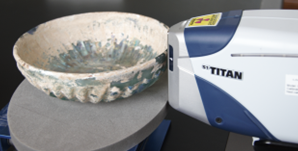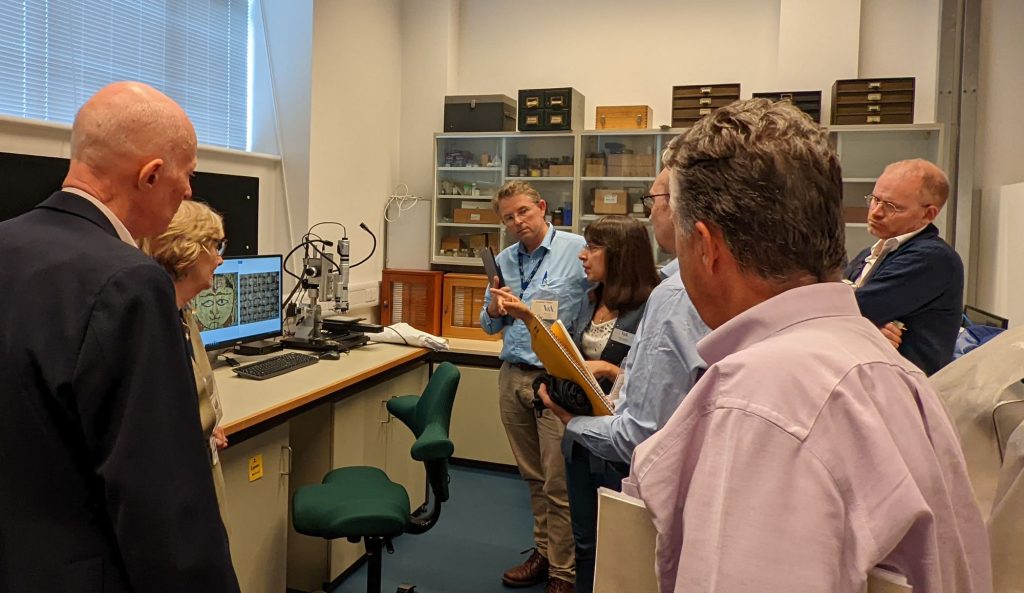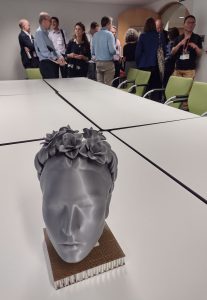How can we prevent damage to old objects when the environment around them is changing? Imperial College London and the Victoria and Albert Museum are collaborating to solve new questions in the conservation of materials.
On 7 September, the Science and Engineering Research for Cultural Heritage network organised a collaborative workshop with the conservation team at the V&A. The goal was to brainstorm areas where Imperial scientists and engineers could collaborate with museum conservators and scientists, in order to solve problems in conserving cultural heritage objects.

Conservation of materials
Conservation is the practice of looking after cultural heritage objects to preserve them for future generations. These objects might degrade due to light exposure, humidity, mechanical damage, or due to long-term spontaneous processes happening in their materials, like glass disease. Conservators try to prevent or slow damage occurring in the first place, or to stabilise damaged objects. It’s not about making the object appear new, as often the damage is part of the story of the object. This obviously requires detailed knowledge of the object’s materials and how they interact with light, water, heat or anything else in the local environment.
Current conservation science questions
The V&A organised a mini-symposium where their staff presented their burning questions in conservation of materials.

Three major themes emerged:
- With climate change, local heat and humidity ranges and cycles are changing. This affects objects in the V&A’s collections, and conservators need to work out how to look after objects under these changing circumstances. With high energy prices, the answer can’t be just to install air conditioning! So how do glass, paint, textile, etc. react to these new conditions? What sort of damage happens?
- The V&A is acquiring modern objects for their collection, many of which are made of plastics. Little is known about how plastics should be conserved long term. There are many different types of plastic. Many of these are very new materials that are designed to be used once and then discarded. How should these be treated so that they last?
- As part of their sustainability plan, the V&A is reducing the amount of waste they generate from their exhibitions and operations. They’re want to use recyclable materials in exhibitions, for example as mounts to support objects. But these objects have to be made from very inert plastic, so they do not damage the object they’re supporting. These types of plastic can be hard to recycle. Could they be replaced with something more environmentally friendly?
After the symposium, the V&A team led a tour of the newly refurbished conservation science labs.

Finally visiting Imperial staff and V&A colleagues had a very productive brainstorming session, which threw up several new areas where overlapping research interests could lead to collaborations. No details of these yet… you’ll have to wait and see!
The long road to data
It’s amazing how siloed you can be in research. The V&A is literally down the road from Imperial College London, and yet collaboration between the two institutions only rarely happens. The goal of setting up SERCH is to help researchers who have common interests find each other, get talking and start exploring projects. It’s a long road, and an easier one in company.
The whole day in one photo

Standing on the table in the seminar room (with SERCH visitors in the background) stands a 3D printed head of Frida Kahlo. This was used as a prototype for making mannequins at the 2018 V&A exhibition Frida Kahlo: Making Her Self Up. This is now a rather beautiful piece of waste. How can museums either preserve 3D printed materials long-term, or get rid of them sustainably?
The Kahlo head sits on top of a piece of Hexlite 620. This is a composite aluminium and glass fibre backing board used to support textiles in exhibitions. This material is essential to display textiles without damaging them. But it’s not recyclable or reusable. What could we use instead?